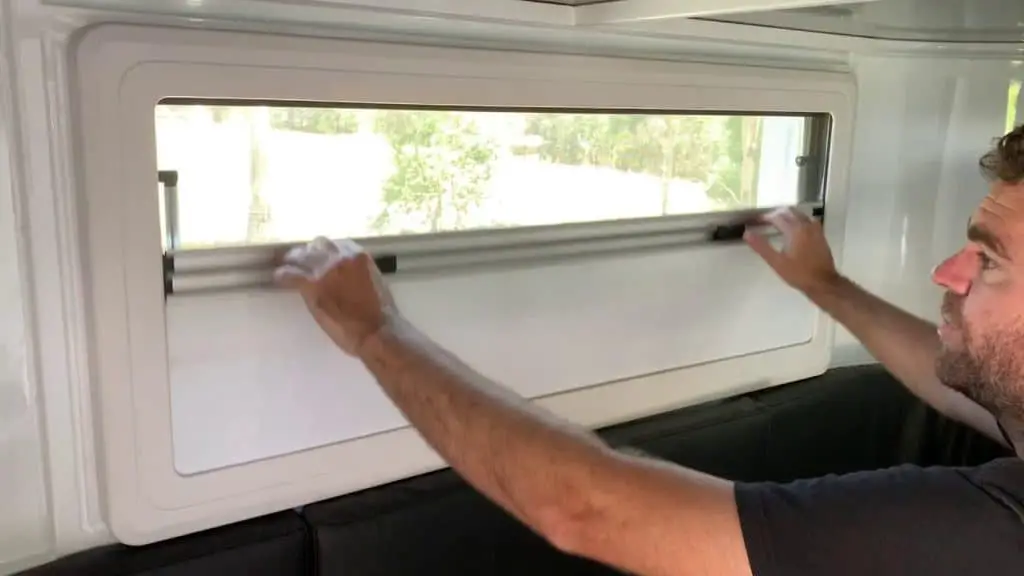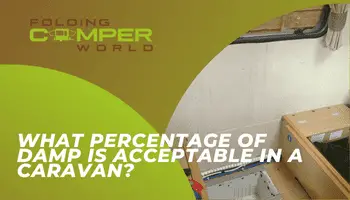One of the most common issues a lot of caravans face is damp, especially here in the UK, where the climate is very wet for most of the year. Although new caravan models are now being built using materials that work to prevent damp from occurring, there are still plenty of older caravans with wooden construction, which can very easily be damaged due to moisture-related issues. This means that damp is still an issue that many caravanners are facing. Not only does it look and feel uncomfortable, but it can also affect the value of your caravan. In addition to this, damp, mould, and mildew problems can have profound health implications for you and your family, whether in your home or your caravan.
Although it may seem like your caravan is unusable once it gets damp, this is not the case. If you manage to notice the damp quite early on, it is something that can be fixed, although it is pretty costly to do so. Most of the time, the percentage of damp present in your caravan is very low and allows you to use it for quite a while. An acceptable amount of damp in a caravan is between 0 – 24% based on my research speaking to experts. Once the damp percentage reaches any higher than this, it’s time to take steps towards treating the issue.
In the blog post below, I will discuss the following:
Why is damp bad for your caravan?

Damp related issues in caravans can come from several different reasons. One of the most common reasons is an untidy caravan that hasn’t been cleaned over a long period. However, this is not always the case. Sometimes event the cleanest caravans can become victims of damp. What makes it worse is that once damp occurs, it can result in mould or mildew also forming. As explained earlier, this is a common issue with caravans that have been constructed out of wood, which is why it is so important to know the sign of damp. This will allow you to recognise when your caravan is experiencing damp so you can deal with the issue accordingly. Some of the most common signs of damp in caravans are:
- A musty scent
- Stains or water spots on the walls of your caravan
- Soft feeling walls when you touch them
- Black marks on the walls or around the doors and windows
If these signs can be seen in your caravan, you will likely have damp in your caravan. However, if you are unsure, it might be worth investing in a damp meter. To learn more about some of the best damp meters, read our previous post, ‘Best moisture/damp meters for caravans’
There is no doubt that damp is bad for your caravan. However, it is also bad for you and your family if you spend a lot of time in a caravan full of damp. This is because it has many health risks that are often underestimated, especially if mould and mildew form as a result of it. The effects of damp can be especially severe for children and the elderly. Here are some common health risks of being exposed to too much damp:
- People with asthma can experience asthma attacks.
- People with weakened immune systems can get lung infections when exposed to damp, mould and mildew.
- It can also affect mental health, including memory loss, mood swings, chronic fatigue and migraines.
- Skin can also react by breaking out in hives, skin rashes, eczema, bacterial infections or fungal infections.
What level of damp is acceptable?

As briefly mentioned at the start of this blog post, you can still use your caravan when it starts to get damp, as long as it is within the lower range. There are no ‘acceptable’ levels of dampness in a caravan; however, noticing it earlier means you can treat it quickly and prevent it from becoming worse. This is why damp meters are so helpful, as they enable you to see whether immediate action needs to take place or not. That being said, moisture meter readings are never 100% accurate as there is likely to be some moisture or damp. However, if you have lower reading, your caravan is still in good condition, and you can continue to use it.
To better understand how moisture meter readings work and how to understand what the readings mean, I got in contact with James, a technician from a local caravan service station. The first thing I asked him was how damp could affect a caravan. He explained:
“Damp is probably one of the worst things that can happen to a caravan because it is such a natural occurrence, and sometimes you don’t even notice it until it gets really bad, at which point, saving the caravan is very difficult. This is only in very severe cases, though. Most of the time, people catch it before it gets to that point, and they can usually make changes in the way they use their caravan to stop it from getting any worse. […] The worst part of it is that it can really make the value of your caravan drop. Once damp enters the caravan, it’s likely that over time it’s just going to get worse if you don’t properly treat it”.
I then asked James what an appropriate reading on a damp meter should be for a caravan that is still suitable to use. He provided me with the following information, which I have presented in the table below.
| Moisture percentage | Action needed |
|---|---|
| 0 -15% | No action is needed. |
| 16 – 20% | It doesn’t require any action, but you should keep an eye on it and regularly check moisture levels. |
| 21 – 24% | You’re likely to see some early physical signs. Steps should be taken to treat the issue. (See the next section on this blog post to see what steps you can follow) |
| 25 – 30% | This means there are obvious signs and moisture such as surface damage such as damp and softness of wallpaper and surfaces. Work needs to commence to fix this. |
| 31%+ | This indicates severe structural damage, and this will only worsen from this stage if not treated effectively. |
Ways to prevent damp

I then asked James if there were any steps to help prevent damp. Here’s what he suggested:
- Regularly use your caravan – Frequently using your caravan can help reduce the risk of damp as it means you can ensure your caravan is well ventilated to allow fresh air to move in and out of the caravan.
- Avoid condensation – You can do this by avoiding drying your clothes in the caravan. It would help if you also kept windows open when cooking or using the shower.
- Wipe the walls – When cleaning your caravan, make sure to wipe the walls as condensation can form here, which can cause damp.
- Clean window frames – Wiping down condensation from your caravan windows will help reduce the risk of black mould forming.
- Let air in – Humans give off moisture that can develop into condensation, resulting in damp. Opening your windows to release damp will prove to be very effective.
Damp is sometimes an unavoidable issue for a lot of older caravans; however, with the proper steps taken, you can still use your caravan for a long time to come. Hopefully, this blog post has explained how you can ensure your caravan remains in good condition.


